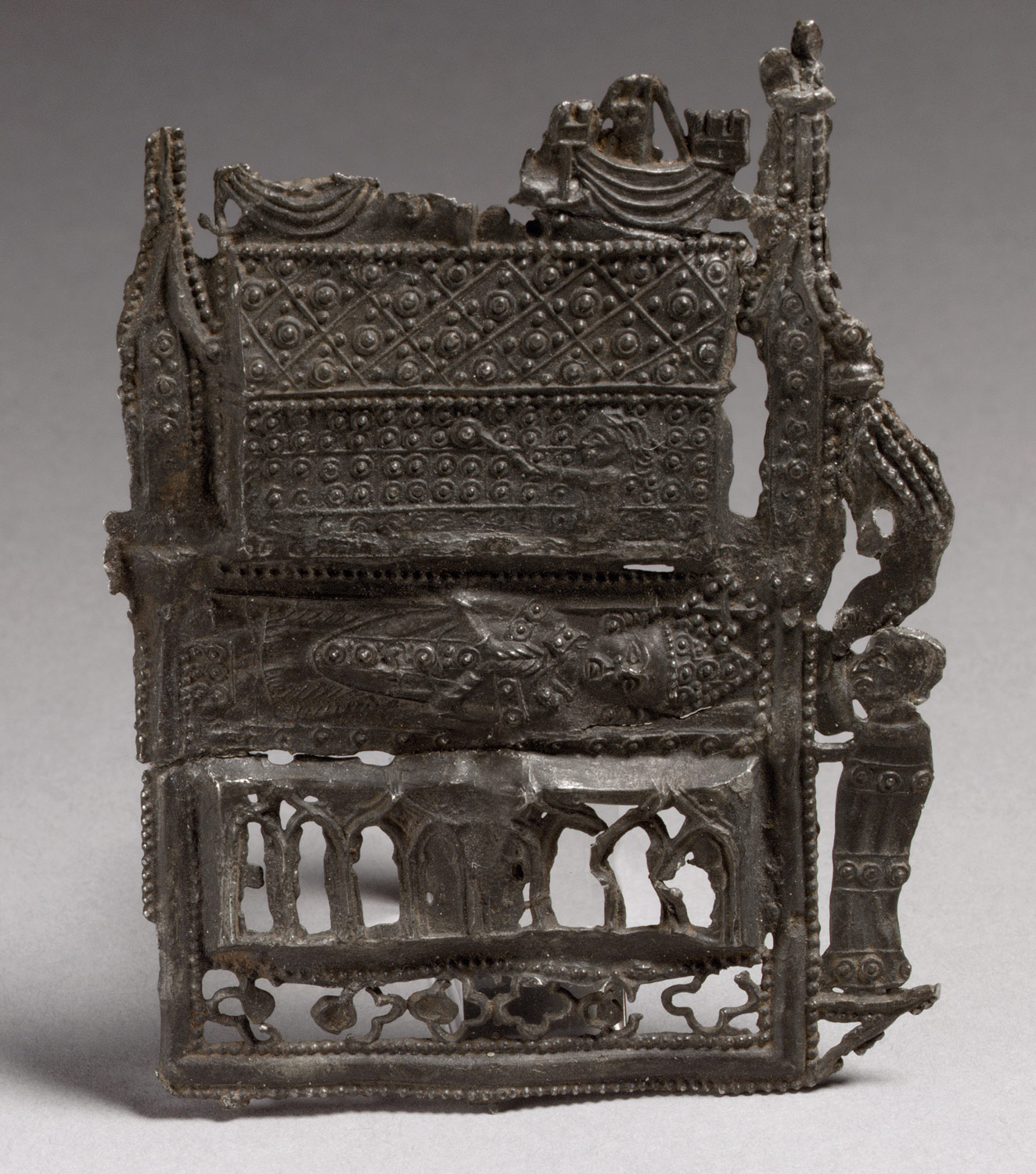
Here we have a "Pilgrim's Badge of the Shrine of St. Thomas Becket at Canterbury" made between 1350 and the 1400s in Canterbury, England. These were most likely made by a Metalworker in Canterbury as a cheap souvenir for pilgrims. This bade was made from cast tin-lead alloy and is sized at 3 1/8 x 2 1/2 x 1/8in. Although, this particular artifact was specific to Canterbury, England as a part of Catholic British culture when St. Thomas Becket was murdered in his own cathedral by Henry VIII's men, pilgrims took these home to their loved ones across Europe. This piece would have represented the martyrdom of St. Thomas Becket and be a symbol of faith as people traveled hundreds of miles to pay tribute to a faithful servant of their God. It would have also represented the reverence for devote Catholics because of the beautiful detail of his shrine with jewel-encrusted tomb, baby cathedral arcs, and careful designs. I would compare this to a modern day postcard because it visually displays the sight of the pilgrimage that then pilgrims can bring home to their families to show a small representation of what the famous shrine looked like and serve as a mark that they had been there.
The author here use of color I think is chiefly due to the nature of the artifact as it is a souvenir that needed to be affordable for all travelers, therefore, it takes on the color of the dark metal/ pewter it was formed out of. The nature of this artifact being a badge leads the artist to work on a two-dimensional plane to show depth but within in the setting, there are three-dimensional elements to show the different aspects and details of the shrine. The rectangular shape and depth draw the eye to the center where St. Thomas Becket is represented with the most detail and three-dimensional qualities. This reinforces that the Saint is the center of attention and the reason for the pilgrimage as the ultimate symbol for the faithful. When holding this badge, pilgrims would feel the textured/raised elements such as the jewels and the martyr himself which would reinforce their importance where as the two other figures in the badge are fairly flat and unimportant. The form and shape of the badge enhance the meaning because it draws attention to the important elements where as a similar drawing in may not have been able to without color.
The purpose of this piece is to commemorate the martyrdom of St. Thomas A. Becket and honor the pilgrimage made by the faithful. In the time of the church split, the English people felt very convicted to display their faith and condemn those who thought differently. This badge was not only a religious claim but a social claim of their faith and boldness to pay tribute to a man murdered by their King. The title points out that as a badge, this artifact was like a trophy or medal for pilgrims, especially to those who traveled a long way, to show that they had indeed reached their destination as a faithful Catholic. Looking back on this piece, a modern historian would see that it also shows that such a pilgrimage in this time was not just for personal conviction, but a "great deed" to boast about. The meaning of this piece as a mark of honor and respect loses some of its weight when you see the social role that this souvenir would have played. Realizing that such souvenirs would have been sold at a Saint's shrine shows that pilgrims desired to have evidence that they had been there so people might think more highly of them and recognize them for their devote religious convictions. In addition, the presence of souvenirs at a shrine shows that the common people in England during this time had strong Catholic religious values, as they had enough people come through to sell such items. The value of this art in today's society is huge because it is one of the few visual displays that allows us to see what the shrine was like before it was plundered. Also the badge leads today's society to understand what the importance of the shrine might have been back then by comparing it to modern places that we acquire souvenirs to show our loved ones such as Disney World.
Image Right: http://www.metmuseum.org/toah/works-of-art/2001.310/
Image Left: My House by Me
